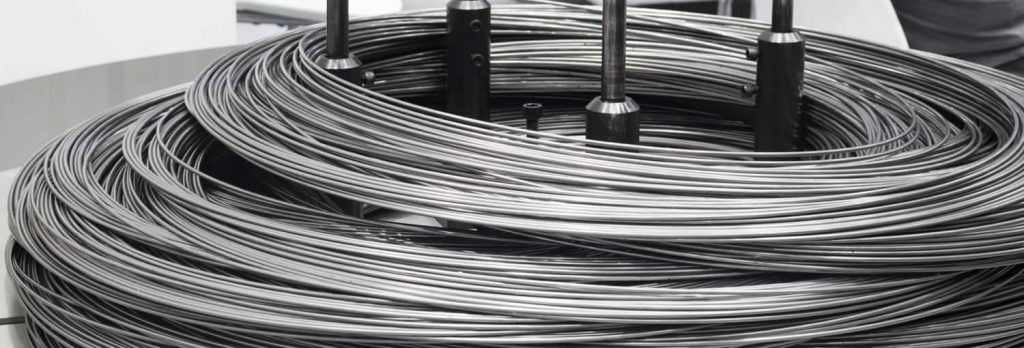The experimentation of new paths for the cold wire reduction is still considered very little by the industrial and goldsmith realities.
This is because many companies do not have an internal R&D department, while others are limited by obsolete machinery and follow already known paths, capable of bringing certain results.
Indeed, the experimentation in wire rolling could lead to new methods of reducing wire, faster and cheaper.
Let’s see together some possible ways.
The fundamentals of wire cold forming
The wire, destined to the industry and the goldsmith sector, is always manufactured from a piece of molten metal (or alloy), which is later solidified through casting and extrusion processes.
The final product of these processes, though, is not ready to be sold on the market just yet and requires further processing.
At this point, normally the starting wire diameter can vary, influenced by the technique and the equipment used. However, it’s possible to say that usually but we can say that most of the wire is cold formed starting from Ø25 mm down to diameters of 0.5 mm after rolling and profiling.
But what if the rolling needs are different from the usual? With the obsolete rolling mills, no further wire reductions could be achieved.
Are there any alternatives for cold wire reduction?
If we would use the metaphor of the journey – and an old known motto – we can say that, as all roads lead to Rome, in the same way, there are different roads that can be taken to reduce the wire in section.
Infact, to reach a destination, it is possible to choose between different ways: the fastest, the easiest, the cheapest, etc.
Similarly, in the case of cold reduction of the wire, there are several alternatives to achieve the goal: these vary according to the material and its final application and production needs.
Which are the most common construction needs when it comes to cold wire reduction?
Throughout our years of experience in metal cold rolling, we have identified the most common wire manufacturing needs.
- moderate cost: when the main goal is to carry out the reduction in section in the shortest possible time;
- presence of particular metallurgical properties: not all metals are the same, they all have different and intrinsic properties, linked to workability or ductility, which define which degree a material can sustain plastic deformation under tensile stress before failure;
- presence of particular thermal and electrical properties such as expansion or thermal capacity, conductivity, etc .;
- materials with particular shapes and dimensions, with specific tolerances that require special processing or applications;
- aesthetic characteristics to be preserved such as surface polish and wear resistance;
- presence of specific mechanical characteristics related to reliability and durability, such as tensile strength or breaking load.
Choosing the best route is not so simple: based on the material and the final application, a specific path should be followed.
The better way
Using a tandem rolling mill with a train system is the right solution for all these production needs.
Thanks to the tandem rolling mill it is possible to:
- configure the number of rolling passages;
- adapt reduction section to the material;
- produce a wire without corner or twisting;
- obtain a wire with constant quality and repeatable;
- avoid wire breakage, thanks to tension control.
INVIMEC specializes in wire rolling and tandem mills. We offer multiple solutions capable of responding to different production needs.
In particular, the company offers the possibility of:
-
- testing six different tandem rolling mills models;
- carry out technical tests on materials (even on those that do not lend themselves to being drawn, such as zinc and tin);
- simulate the production process;
- verify the result through metallurgical and dimensional analysis.
In addition to the various tests, INVIMEC provides all its expertise and technical experience on wire cold reduction.
To get our advice and find the most interesting solution for your needs, contact us!
